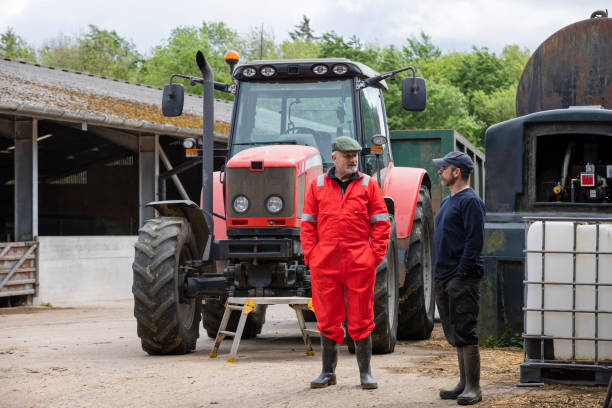Land clearing is vital in construction, agriculture, and property development. It involves removing trees, shrubs, and other vegetation to prepare a site for new projects or make land more usable. While the objectives for land clearing may vary, one constant remains: the need for the right equipment. Any land-clearing project’s success, efficiency, and safety largely depend on the tools used.
Choosing the proper equipment can significantly reduce labour time, enhance safety, and ensure the project runs smoothly. Here, we explore five essential pieces of equipment for land clearing, their unique roles, and how they contribute to the process.
1. Chainsaw: Precision Cutting at Its Best
The chainsaw is arguably one of the most indispensable tools for land clearing. Its primary function is cutting down trees, clearing bushes, and trimming overgrown vegetation. Without a chainsaw, the manual process of cutting trees with traditional hand tools would be arduous and time-consuming.
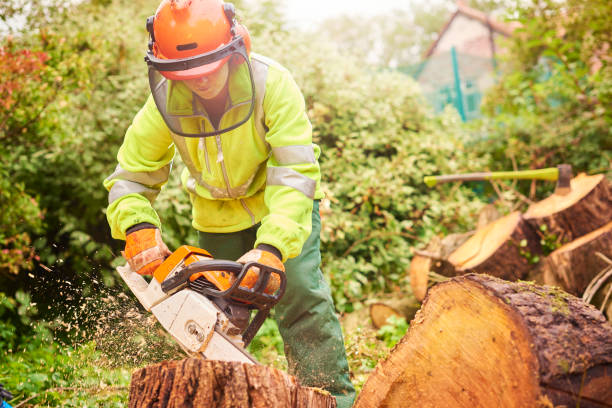
Key Features and Benefits:
- Portability: Chainsaws are lightweight and easy to manoeuvre, making them ideal for tight spaces and areas larger equipment cannot reach.
- Power and Efficiency: Available in gas, electric, and battery-powered models, chainsaws provide sufficient power to cut through thick tree trunks and dense vegetation.
- Safety Mechanisms: Modern chainsaws are equipped with chain brakes and anti-kickback features to reduce the risk of accidents during use.
Usage Tips:
- Always wear personal protective equipment (PPE), including gloves, goggles, and ear protection.
- Regularly inspect the chain and bar for wear and tear to maintain cutting efficiency and safety.
2. Chipper: Turning Waste into Valuable Resources
After cutting down trees and clearing vegetation, a large amount of debris is usually left behind. This is where the chipper becomes essential. A chipper transforms branches, leaves, and small logs into wood chips or mulch, making waste management more efficient.
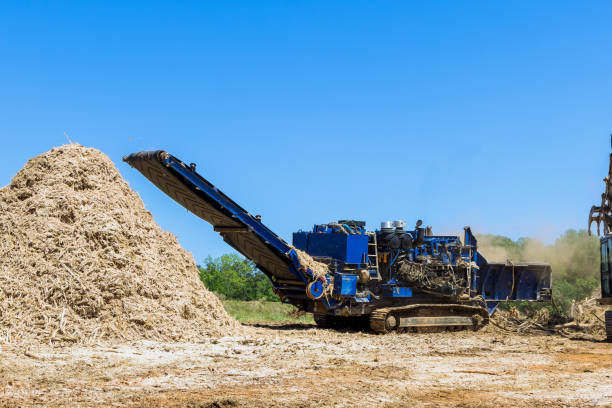
Key Features and Benefits:
- Waste Reduction: Converts large piles of brush and branches into compact, manageable wood chips.
- Environmental Benefits: Wood chips can be repurposed as mulch for gardens and landscapes, promoting sustainable practices.
- Time-Saving: Instead of hauling away large amounts of debris, chippers allow for on-site processing.
Usage Tips:
- Ensure that only approved materials are fed into the chipper to avoid damage to the blades.
- Always follow the manufacturer’s safety guidelines, as improper use can result in severe injury.
3. Bulldozer: Powerhouse for Large-Scale Land Clearing
A bulldozer is essential when dealing with large tracts of land. Its size, strength, and ability to push large amounts of debris make it perfect for heavy-duty clearing tasks.
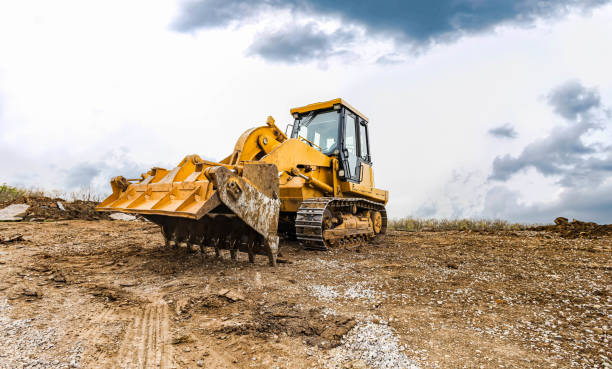
Key Features and Benefits:
- Heavy-Duty Blades: Bulldozers are equipped with wide, powerful blades that push trees, rocks, and large debris to clear pathways.
- Versatility: Bulldozers are used for clearing land, levelling ground, and preparing sites for construction projects.
- Hydraulic Control: Operators can control the blade’s angle, tilt, and height, making it adaptable to different clearing tasks.
Usage Tips:
- Proper training and certification are required to operate a bulldozer safely and effectively.
- Before starting work to avoid damage, consider the terrain and potential underground utilities.
4. Excavator: Digging and Lifting with Precision
An excavator’s ability to dig, lift, and remove materials is crucial to any land-clearing project. Its large bucket and hydraulic arm can uproot trees, remove large rocks, and clear away heavy debris.
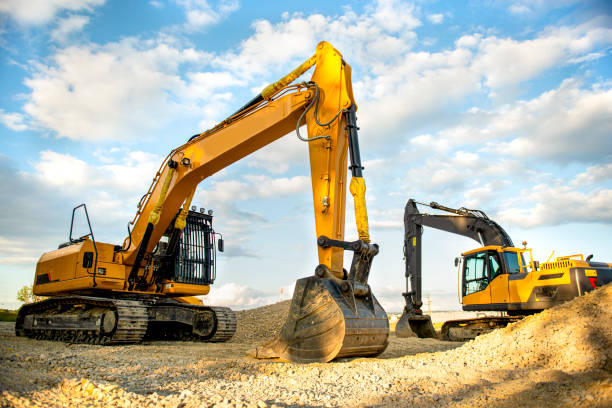
Key Features and Benefits:
- Multi-Purpose Utility: Excavators are used to dig trenches, remove tree stumps, and lift heavy objects.
- Size Variations: Available in mini, standard, and large models to fit the needs of residential, commercial, and industrial projects.
- Enhanced Precision: With 360-degree rotation, the hydraulic arm can reach tight spots and areas inaccessible to larger equipment.
Usage Tips:
- Ensure operators have proper training to avoid costly mistakes or accidents.
- Conduct daily equipment inspections, focusing on hydraulic systems, tracks, and the arm’s stability.
5. Tractor: A Multi-Purpose Machine for Varied Tasks
Tractors are versatile and can be outfitted with various attachments to handle multiple land-clearing tasks. From ploughing and mowing to pulling and lifting, tractors are valuable to any land-clearing project.
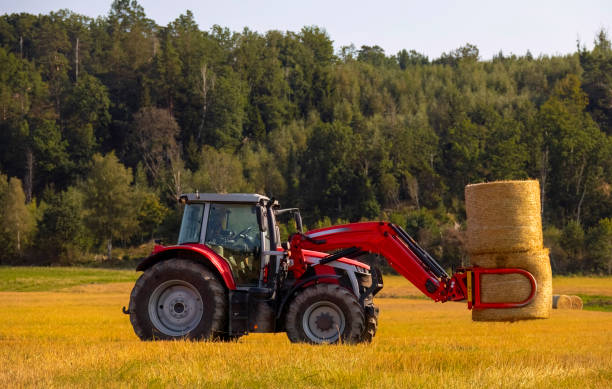
Key Features and Benefits:
- Attachment Compatibility: Tractors can be equipped with ploughs, backhoes, and loaders, transforming them into multi-functional machines.
- Accessibility: Tractors are suitable for small to medium-sized projects where larger equipment may not fit.
- Ease of Use: Tractors are simple to operate, making them a popular choice for professionals and landowners.
Usage Tips:
- Select the right attachment based on the task to maximize efficiency.
- Follow routine maintenance checks to prevent breakdowns during crucial project phases.
How to Choose the Right Equipment for Your Land Clearing Project
Selecting the right equipment depends on several factors, including:
- Size of the Project: For large-scale clearing, a bulldozer or excavator may be necessary, while smaller jobs may only require a chainsaw or tractor.
- Type of Vegetation: Heavily wooded areas will need powerful machines like bulldozers and excavators, while grassland may only require a tractor with attachments.
- Safety Considerations: Ensure operators have proper training and PPE. Prioritize equipment with modern safety features.
Safety Tips for Land Clearing Projects
Land clearing is a high-risk activity due to the heavy machinery and unpredictable nature of trees and vegetation. Here are key safety tips:
- Conduct a Site Assessment: Identify hazards such as overhead power lines, underground utilities, and uneven terrain.
- Wear Personal Protective Equipment (PPE): Helmets, gloves, ear protection, and high-visibility clothing are essential.
- Use Trained Operators: Only certified operators should handle heavy equipment like bulldozers, excavators, and chippers.
- Emergency Plan: Have a first aid kit and emergency response plan.
Conclusion
Land clearing requires meticulous planning and the right tools to ensure efficiency, safety, and environmental responsibility. Each piece of equipment plays a critical role, from chainsaws’ precision to bulldozers’ sheer power. Selecting the right combination of these tools depends on the scale and nature of the clearing project.
Whether you’re preparing a site for construction, agricultural use, or property development, having access to the right equipment will make the process faster, safer, and more efficient. You can achieve a smooth and successful land-clearing project by following safety protocols and selecting the appropriate tools. With this comprehensive guide, you’re now well-equipped to make informed decisions about which machinery to use and how to use it effectively.
